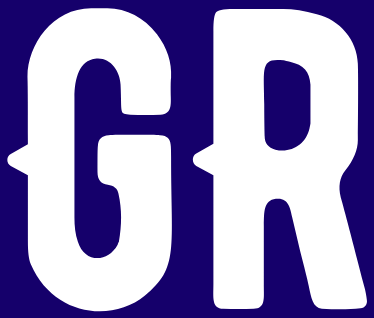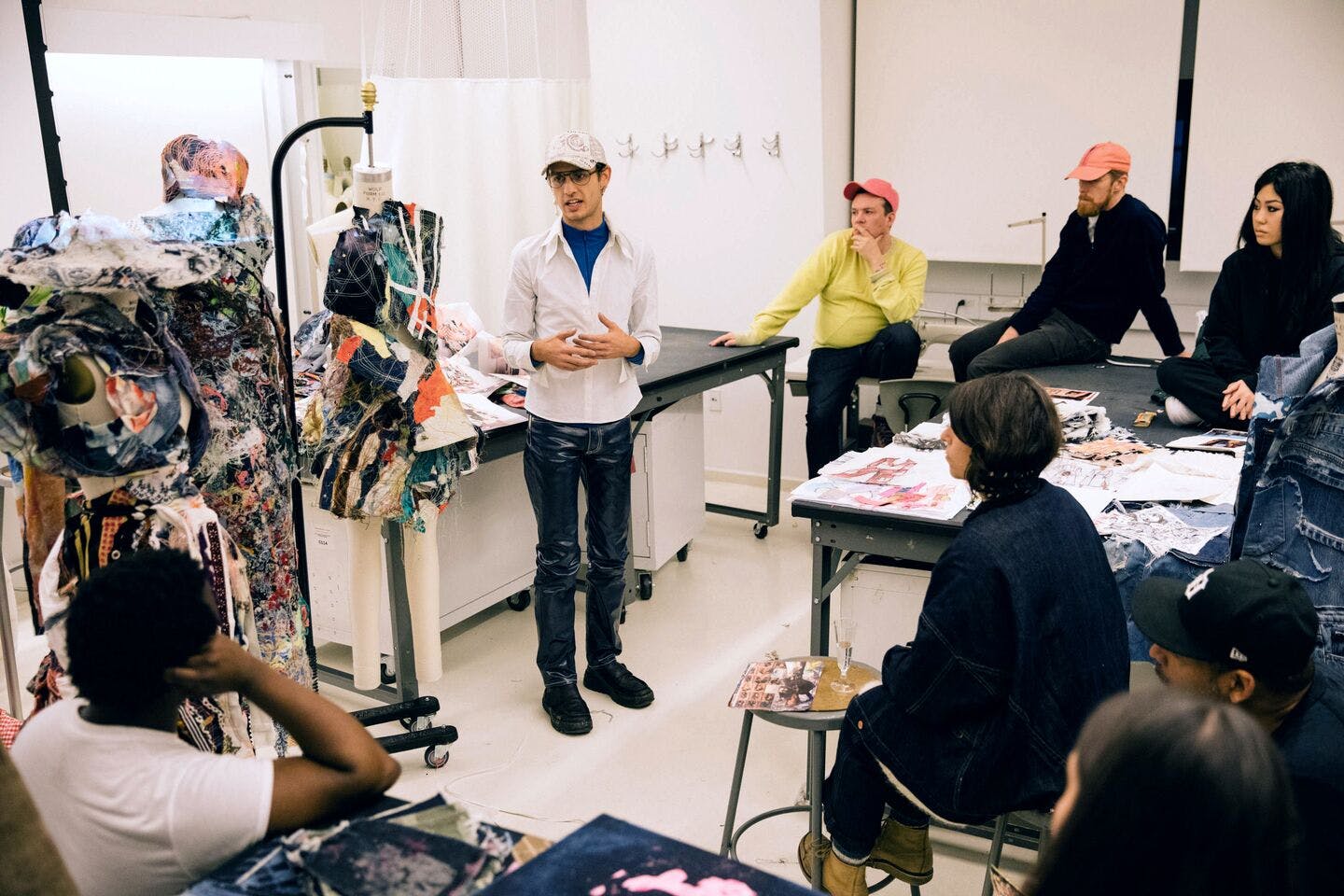High-waisted boyfriend jeans are in, and the rows of low-rise skinny millennium jeans resting in your cupboard now have no place in the ‘cool and trendy’ Gen Z fashion era. A decade ago, the roles would have been reversed.
That’s the thing with fashion trends; they do more 180x than a phone screen auto-rotation. From the hobble skirts in the 1910s to the bell-bottomed blue of the 1980s, old Fashion overtakes new Fashion with time.
The first use of the word ‘fashion’ can be traced to the 14th century, meaning “a making, company, party.” Today what fashion means varies from person to person. Fashion means different things to different people. It is not just wearing clothing with different colors; it depicts their entire identity. The founder of Chanel famously said- “Fashion is not something that exists in dresses only. Fashion is in the sky, in the street, fashion has to do with ideas, the way we live, what is happening.”
Fashion depicts style and personality. It influences how people perceive you. What you wear can very well open and close doors for you. A person who wears colorful clothing will be seen as preppier and more fun than a person who wears ‘all black.’ Fashion through the ages has helped to empower people and make them decipher new meanings for themselves- depict their true selves.
Pre-1800s, fashion in Europe was primarily wide panniers and long silky lengths. In the 1800s, the style shifted to neoclassical with the French Revolution. Women adorned long bulky dresses, which were largely restrictive with corsets, given the nature of women’s rights in that era. But with hints of neoclassicism, such as garments that emphasized the natural contortions of the female body. The emergence of neoclassicism in fashion was the gift of the rapidly changing politics of that era. With the advent of the French Revolution, women weren’t the only ones witnessing a change in fashion. Men, who had mainly been sartorial in terms of color with women, shifted to plain clothing. Depicting Republican elements, the French Revolution divided the sexes in terms of color, showcasing indifference to luxury and emphasizing uniformity, the idea of equality that emerged with the revolution.
SOURCE: https://mentalitch.com/major-fashion-trends-and-styles-of-the-1800s/
Through the beginning of the 19th century, fashion didn’t largely differ from the preceding century. The style was dominated by flashy ornaments, corsets, and modest dresses. The heavy top was in, with women using a “health corset” to emphasize their silhouettes. Over time, sports started to influence fashion trends. As opposed to only wearing the customary fashion, women began sporting dresses according to the occasion.
Fashion eventually softened from the earlier S-shaped corsets and straightened to a woman’s natural shape in the 1910s. Instead of tight tops, now loose and sleeveless tops were in fashion. A high waist and more straightened, tubular silhouettes were in style. The looser styles represented more freedom, as was emerging for women then. Non-restrictive type of clothing was being created. Members of women’s organizations called ‘suffragists’ adorned white dresses and white shoes to suggest purity and their inclination toward achieving common rights and goals for women. The bold and daunting red lip was used as a form of rebellion against those who wanted to strip away women’s rights. Wearing red was seen as scandalous, powerful, and independent.
SOURCE: https://fashionhistory.fitnyc.edu/1910-1919/
However, in 1914, the world was pushed into war, and with that, women needed to step out of their houses and run industries while men fought. Women began to wear simple clothing made of cotton. Military uniforms for women and practical clothing with jackets and long skirts were in style. There was an attempt to make the body look more cylindrical. We can observe some aspects of the same even today. Women started to cut their hair shorter. The war enabled expansion of the role of women to an unprecedented state.
SOURCE: https://www.pinterest.com/pin/419608890254330838/
With women receiving the “right to vote,” what began is called the “democratization of fashion.” Clothing was nowhere the symbol of social status. More natural clothing made the trend in the 1920s. An emergence of unisex fashion was observed, with women sporting high-waisted trousers and dresses that looked like coats. Contrary to the preceding decade, more economical fabric was used. Even dresses were trending, but many women chose the daywear hemline for their gowns. The effect that French fashion had on Europe was slowly diminishing. With tennis emerging as a popular sport for women during that time, knee-length, sleeveless, and short-sleeved attire became more acceptable thanks to Suzzanne Lenglen- a tennis star. As designs became simpler, they were easier to replicate at home, which meant more work for women who knew tailoring.
There was a return to conservative fashion in the next decade with full-length dresses. The sack-like silhouette was all the rave. Body-fitted skimmed skirts, and strong shoulders were also famous. Bias cut, a notable trend in this decade to exaggerate the slender appearance, was also in fashion. Exaggerated shoulders depicted the hallmark of the age. However, the evening dresses were predominantly feminine.
Hollywood had a significant impact on how people dressed. Still, with the Great Depression, it became costlier to sell exact copies with expensive materials to be transported from one place to another. Cheap fabrics such as muslin began to be used.
SOURCE: https://www.pinterest.com/pin/166070304987038506/
By the end of the decade, the world entered World War II. A-line dresses and nipped waists dominated fashion. A significant trend that emerged during the war was drawing a black line along the back of the legs to depict a stocking, as nylon was in acute shortage during the war as the military used it. Tweeds and planes used in the 30s continued to be used. Clothing was being rationed; during this time, new trends, such as front-wrapped denim dresses, emerged, which became a hit in the later decades. Both men and women wore utility and simple clothing. However, at the end of the decade, Dior made famous – “a new look”- a long full skirt, rounded shoulders, and cinched waists. Despite controversies surrounding the outfit, which some claimed would brazen feminism progress. It still remained famous well into the 50s.
SOURCE: https://medium.com/@kalyanii8927/fashion-history-the-new-look-by-dior-e664581e82eb
In the 50s, inspired by Dior’s new look, people started to play with Fashion. Wearing pants by women was seen as women equalizing to ‘the level of men. The “New teenager” look with straight-cut suits and twinsets also became popular..’
SOURCE: https://vintagedancer.com/1950s/1950s-teenager-fashions-girls-fashion-trends-and-clothing-styles/
Fashion has become increasingly casual among all genders. In the 60s and 70s, people moved away from overt fashion styles. Men’s tones became more colored and patterned. Fashion became more concentrated on the youth- the ‘hippie’ style of the 60s, which brought us the miniskirt. As women entered the workforce, fashion became more concentrated around young women and youth who now had more disposable income than ever before. Young women began wearing child-like clothing to appear even more youthful. Kaftans and Afghan clothes started to be embraced. Audrey Hepburn became a fashion icon. Sporting clothing that was sophisticated but could be imitated by all women. The long black dress, in particular, became very popular.
Italian styles of the suit with strip patterns became popular among men. By the mid-1960s, slim-fitted trousers and collarless jackets made famous by icons like Mick Jagger became the trend. Fashion then shifted towards Eastern influence, with men rejecting the ideas of consumerism and synthetic material, and men began to wear vintage clothes.
SOURCE: https://www.pinterest.com/pin/595249275734245580/
The peasant look represented the ‘folklore look’ and became popular. Pantsuits, denim suits, boho dresses, knee-high boots with rounded edges, sweater vests, crotchets, turban, and flared-leg jumpsuits emerged in the 70s. A lot of these trends can be observed even today.
By the late 80s, the dominance of high fashion was long gone. New models of fashion -‘street style look’ became dominant. Fashion became more consumer-centric as opposed to designer centric. The 80s Fashion was ‘big and bright.’ Big hair, dramatic earrings, and anything to flaunt wealth was the style.
This decade saw more style icons than ever before- Madonna, Michael Jackson, Lady Diana, etc. Leg warmers, high-waisted jeans, statement business suits, khaki, and ripped jeans were among the hottest trends. Pearly necklaces, aviator sunglasses, and branded clothing became very popular.
90s Fashion was all about being trendy. Boxing shorts and mom jeans were in trend. People truly started wearing how they felt; piercing became popular, people adorned a scarf to look more relaxed, and mood rings became all the rave. Turtle neck, combat boots, baggy jeans, cargo pants, ripped jeans, suspenders- Fashion of this age catered to all age groups. One could pick and choose what they preferred. Hollywood made famous sheer and slip dresses. The likes of Julia Roberts, Brad Pitt, and johnny Depp caused styles like tee under the blazer and bleached hair to become famous.
By the 2000s, the jeans shifted back down; low-rise jeans were all the hype. Denim shorts were in style. The 2000s saw it all; it was the era of the most peculiar fashion. Questionable trends, such as bubble dresses and jeans showing thongs, were trending among the youth. Bandage dress, made popular by the likes of Kim Kardashian and Kate Winslet, was all that was supposed to be worn to a party.
SOURCE: https://www.usmagazine.com/stylish/news/christina-aguilera-is-happy-low-rise-jeans-are-coming-back/
Fashion was more casual than ever. Skinny jeans with sweaters or capris with crop tops and vests could be worn above any top or no tops. Denim maxi skirts- mini skirts were all reasonably popular with low-rise waists. This era was all about perky trends to look the coolest in the group. Fast Fashion picked a higher pace than ever before.
Fashion was a mix of all previous trends, confused, disoriented, and all-around mayhem. In the 2010s, fashion began to be looked at as more than just clothing. It came to articulate a poem or equation. Leisure clothing became acceptable as everyday wear. Street style, initially viewed as an ant-trend, was the trend that managed to penetrate the most- thank you, Gen Z’s. Royals- Kate Middleton bought their own set of influence in fashion, promoting more formal and sophisticated attires.
SOURCE: https://www.harpersbazaar.com/uk/fashion/shows-trends/a30193636/biggest-fashion-trends-2010s/
However, this decade can be described as a true leap in acceptability among people. Big-size models started walking the runway; black people were represented highly on the fashion stage. Bright colors became popular among people of all races. The 2010s were glazed with upturned runway fashions.
SOURCE: https://stylecaster.com/fashion-plus-size-inclusion/
Fashion emphasized moved away from just women. Men started sporting styles and designs earlier reserved for women. The people of the LGBTQ+ community adorned bright, colorful, over-the-top clothing. Makeup trends with hundreds of steps became a skill everyone needed to learn.
SOURCE: https://en.wikipedia.org/wiki/2010s_in_fashion
Fashion changes for sure, but with it, society does too. Style depicts changes in human attitude-be, good or bad. Nowadays, it has become the definition of someone’s entire personality. People have become what they wear and how they feel. Gothic and emo trends are all the rave. Rebellion has a different outfit, as does a member promoting the LGBTQ+ community. Nowadays, nothing is cool, but everything is cool. Elements from early fashion have been mixed and matched with this day and age. It is an amalgamation of people of different identities, opinions, and thought processes.
Indeed, I would be witless to deny how fashion changes and continues to reform society today.


Comments are closed.